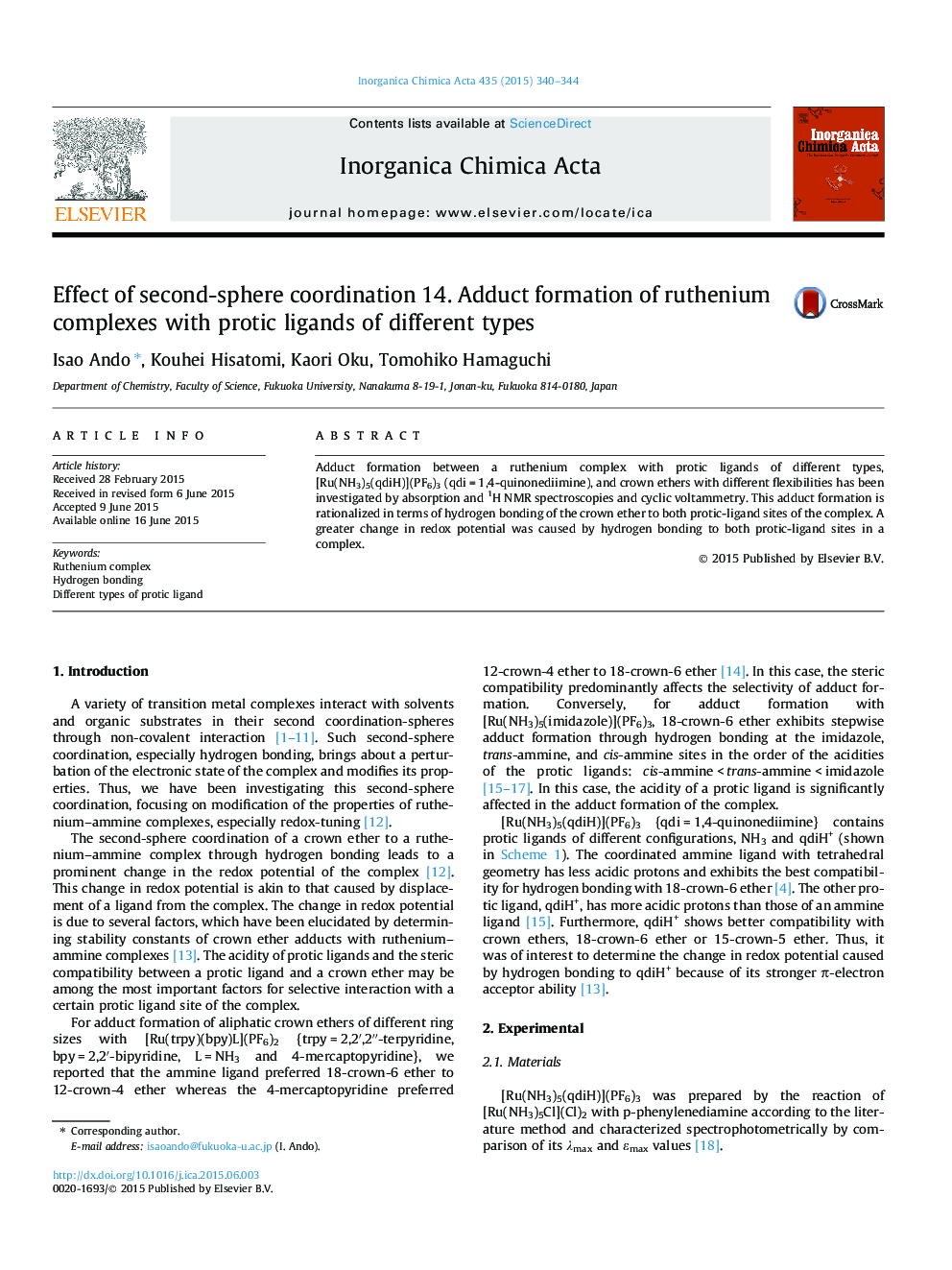| Article ID | Journal | Published Year | Pages | File Type |
|---|---|---|---|---|
| 1308977 | Inorganica Chimica Acta | 2015 | 5 Pages |
•We investigated adduct formation of Ru–ammine complex with two different ligands capable of hydrogen bonding.•Behavior of adduct formation is dependent on ring size of crown ether.•12-Crown-4 and 15-crown-5 simultaneously form hydrogen bonds at two ligand sites.•18-Crown-6 forms hydrogen bonds stepwise at two ligand sites.•Large change in redox potential by hydrogen bonding to two different ligand.
Adduct formation between a ruthenium complex with protic ligands of different types, [Ru(NH3)5(qdiH)](PF6)3 (qdi = 1,4-quinonediimine), and crown ethers with different flexibilities has been investigated by absorption and 1H NMR spectroscopies and cyclic voltammetry. This adduct formation is rationalized in terms of hydrogen bonding of the crown ether to both protic-ligand sites of the complex. A greater change in redox potential was caused by hydrogen bonding to both protic-ligand sites in a complex.
Graphical abstractAdduct formation of crown ethers was investigated for ruthenium complexes with protic ligands of different types. Hydrogen bonding is influenced by the acidity of protic ligand and the steric compatibility between crown ether and protic ligands. A large change in redox potential is induced by hydrogen bonding at both types of protic ligands.Figure optionsDownload full-size imageDownload as PowerPoint slide
